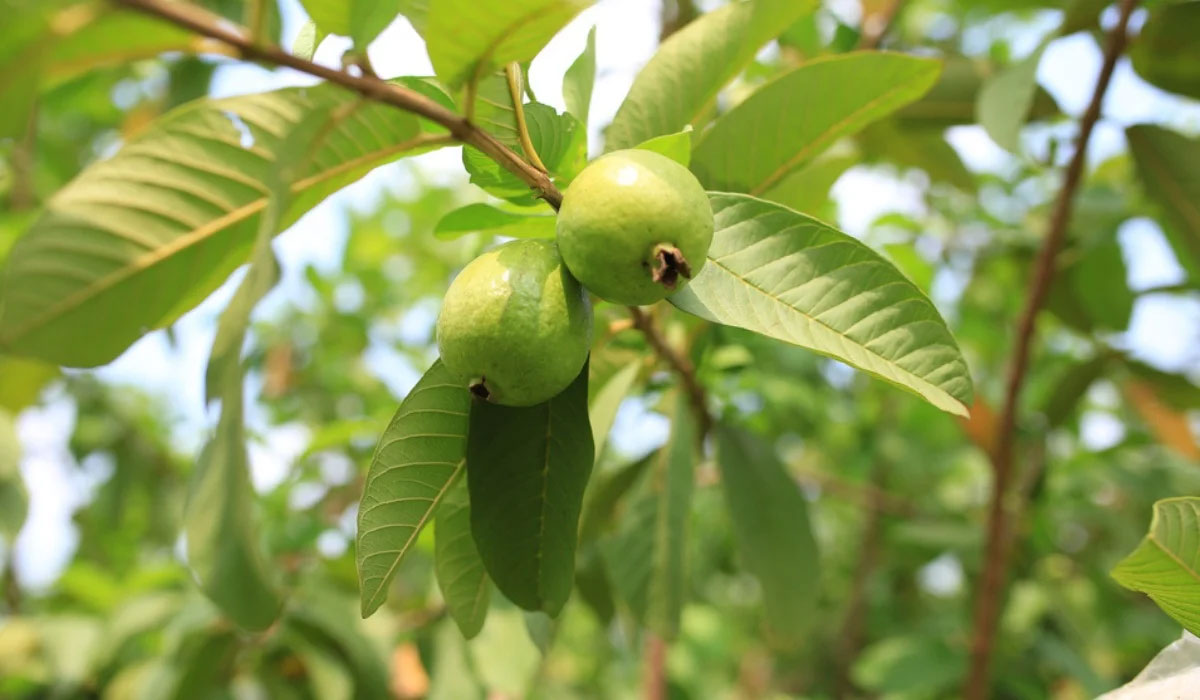Psidium guajava, the common guava, yellow guava, or lemon guava, is an evergreen shrub or small tree native to the Caribbean, Central America and South America. It is easily pollinated by insects; when cultivated, it is pollinated mainly by the common honeybee, Apis mellifera.
Characteristics: Guava is an evergreen shrub or small tree. It grows to a height of 3 – 10 m. The tree has a superficial root system, low drooping branches from the base, and suckers from the roots. Its slender truck is covered with smooth green to red-brown bark
Family: Myrtaceae
Genus: Psidium
Leaf: Guava Tree leaves are dark green, oval, elliptical with obtuse-type apex.
Bark: Guava Tree has a smooth, green to red-brown bark.
Seed: Guava fruit contains numerous tiny seeds. The seeds are edible and have a crunchy texture. They can also be planted.
Blossoms: Guavas have small, white, and mildly sweet flowers.
Fruit: Guava fruits come in different shades, shapes, skin thickness, seed size, and sweetness. They can be oblate, rounded, ellipsoidal, oval, pyriform, or cylindrical. The skin turns green or yellow when ripe and creamy white, pink, or reddish flesh with many seeds.
Native Habitat: Guavas are natives of tropical and subtropical regions
Widely cultivated in tropical and subtropical regions around the world, guava fruits can range in size from as small as an apricot to as large as a grapefruit. Various cultivars have white, pink, or red flesh; a few varieties feature red (instead of green or yellow) skin.
When cultivated from seed, guavas are notable for their extremely slow growth rate for several months, before a very rapid acceleration in growth rate takes over. From seed, common guavas may bloom and set fruit in as few as two years or as many as eight. Cuttings, grafting, and air layering are more commonly used as a propagation method in commercial groves. Highly adaptable, guavas can be easily grown as container plants in temperate regions, though their ability to bloom and set fruit is somewhat less predictable. In some tropical locations, guavas can become invasive. It has become a major problem in the Galápagos Islands.
The plant is used in many different shampoo products for its scent. It is also becoming a popular bonsai species and is currently quite popular in India and Eastern Asia.
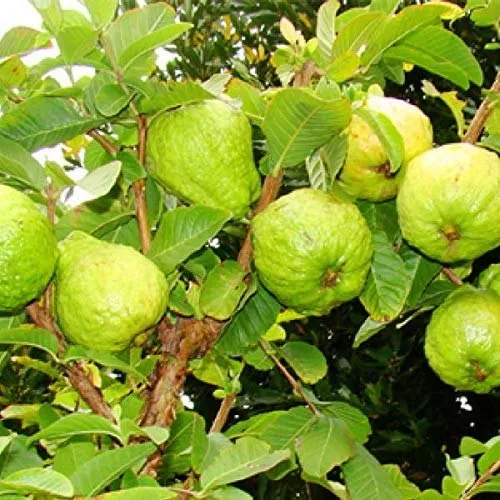
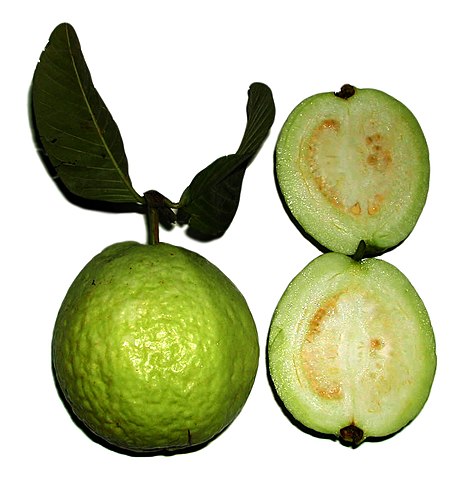

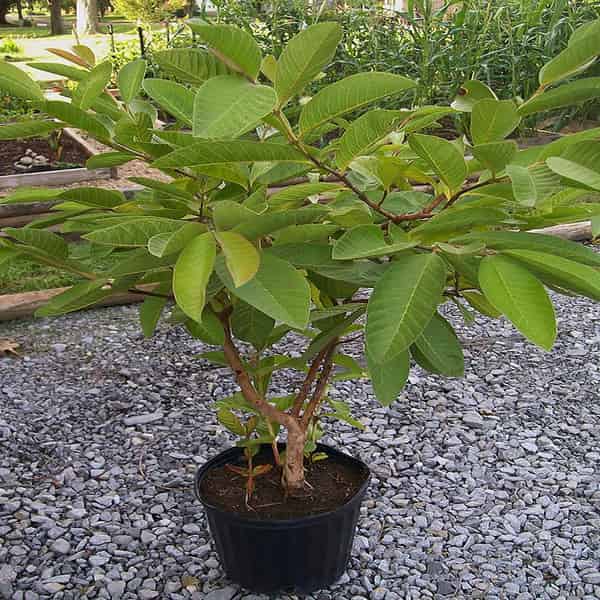
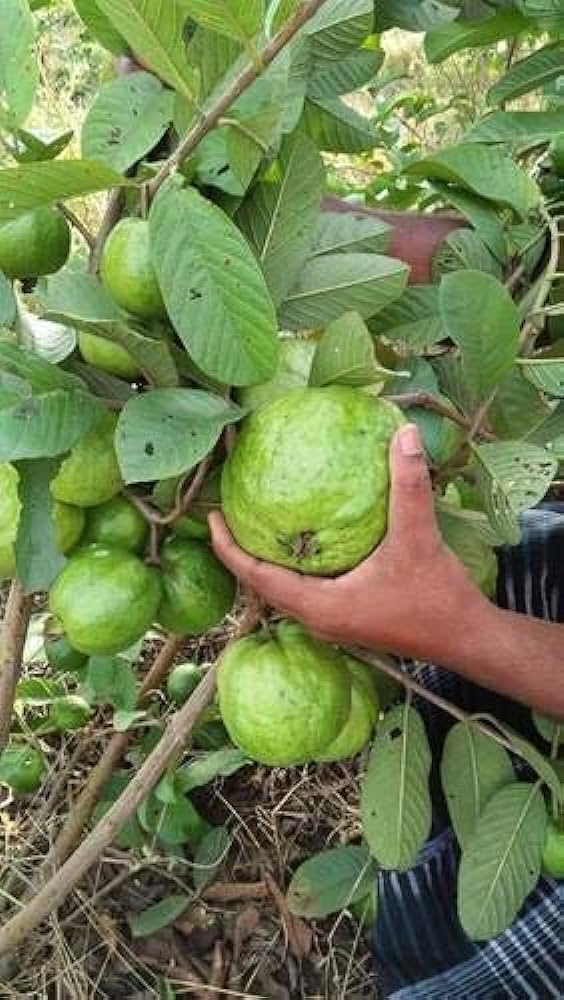
Source: Wikipedia

